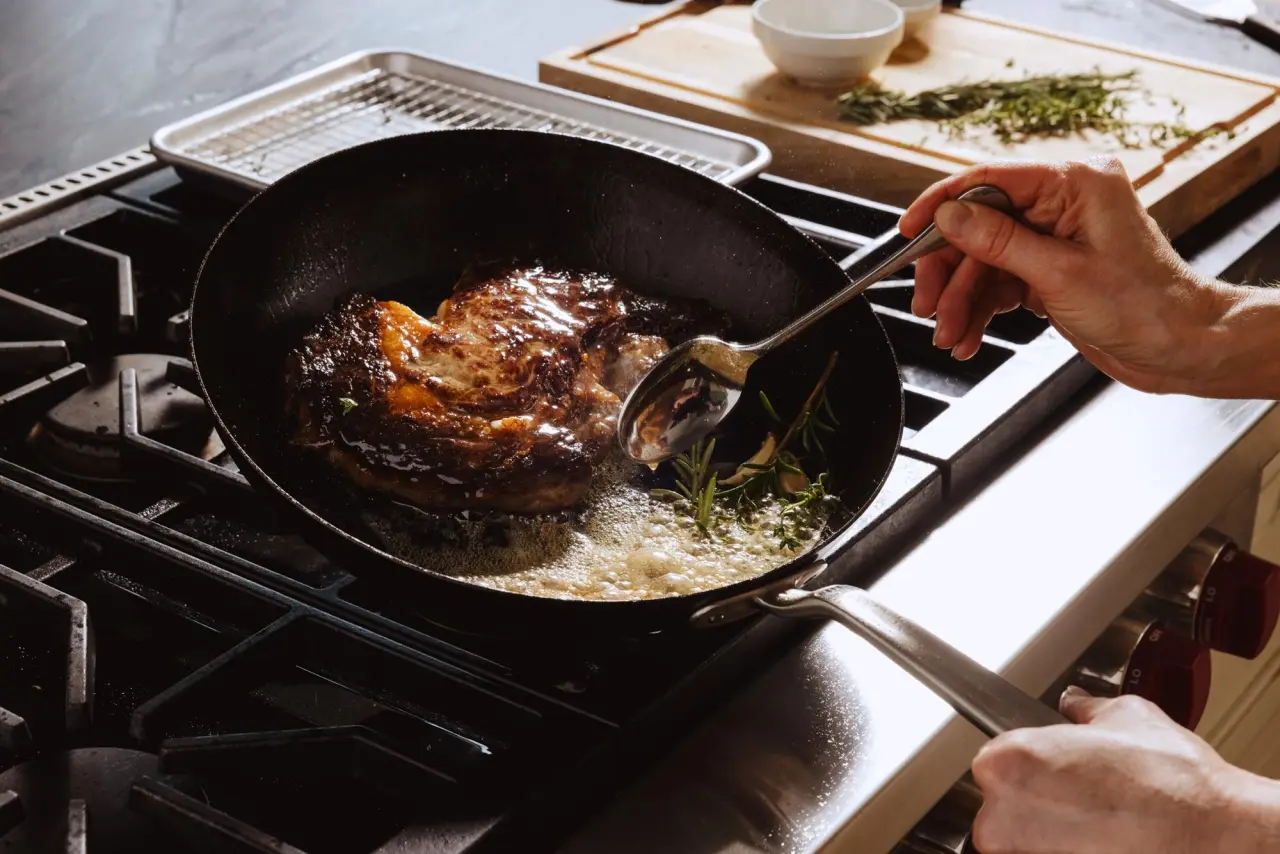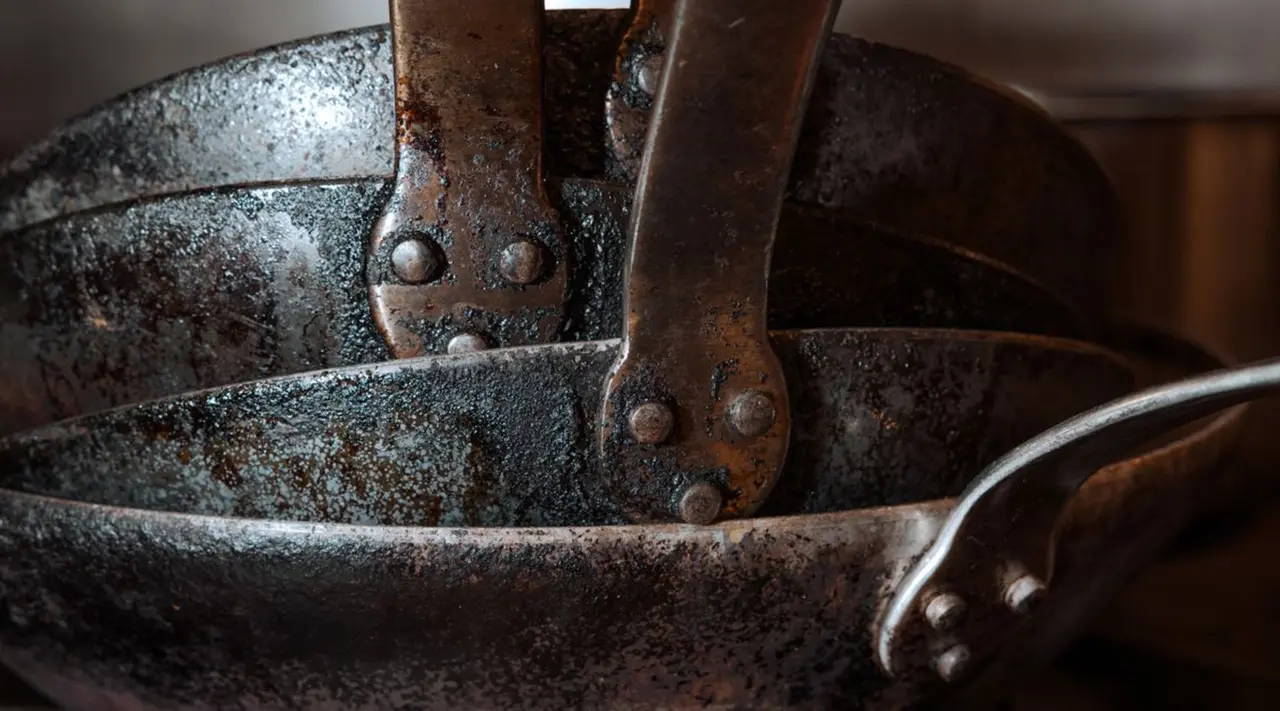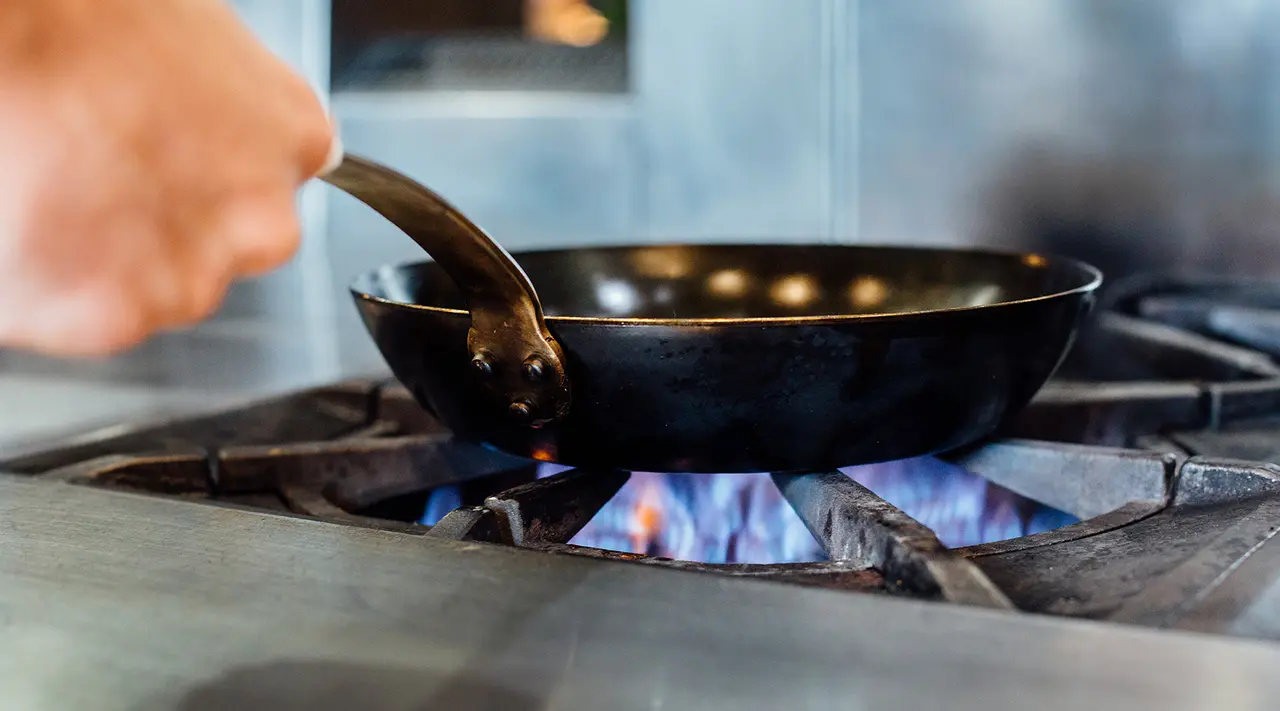If you’ve ever watched a professional knife sharpener at work, there’s a good chance they were using a sharpening stone, or whetstone. These heavy rectangular blocks have a slightly rough texture (or grit) which helps to manually shave thin layers of steel away from the blade. Note that the name “stone” is actually a bit of a misnomer—while there are sharpening stones made of actual stone that you can buy, most chefs use stones made of synthetic materials like aluminum oxide or silicon carbide.
Though many whetstones work by first being soaked with water, the word “whet” is actually an outdated word that means “to sharpen.” Whatever you call it, a sharpening stone can be an incredibly useful tool to have around. Not only is it cheaper and more convenient than bringing your Chef Knife or other favorite knives to a professional sharpener, but you can also control how much metal you shave off during the sharpening process, which can help prolong the blade’s lifespan.
Here’s everything you need to know about using a sharpening stone to safely sharpen your knives at home.
How to Use a Sharpening Stone
Using a sharpening stone is more or less a two-step process—sharpening the blade by moving it gently across the stone at a slight angle, and then finishing by smoothing it out and refining it (note that the process is slightly different for serrated knives). Here’s how to do it step by step.
Step 1: Soak the Stone
Water stones usually need to be submerged in water for anywhere from 10 to 45 minutes, while some just need to be sprinkled with water before use: check the instructions for your stone. Oil stones, on the other hand, need to be coated with a layer of honing oiI.
Step 2: Set Up Your Stone
Set your stone up on a towel or dishcloth to keep it from slipping, positioning it so that it’s perpendicular to your body. For general sharpening and maintenance, you should start with an 800 – 1,000 grit stone.
Step 3: Find Your Angle
To begin sharpening, you’ll first need to find your blade’s bevel, or the angle at which the edge has been ground down. This is typically around 15 or 20 degrees. If that information isn’t included in the knife’s manual, check out this video to learn how you can find your particular knife’s bevel.
Step 4: Pull the Knife Towards You
With the blade facing down at your bevel angle, draw the blade towards you, using even pressure, while going both down and across the length of the stone in a slightly rounded motion.
One hand should be gripping the handle, with the fingers of the other hand rest on the flat side of the blade. Stop when the blade’s tip touches the end of the stone closest to you.
Step 5: Repeat
Repeat this motion 10 to 20 times, starting with the heel at the top of the stone, until a small fold of steel—called a burr—forms at the edge of the blade, and a thin layer of silty water begins to develop along the side. Flip the knife so that the opposite side is resting on the stone, and repeat the same process.
Step 6: Refine
To smooth and polish your blade, repeat Step 4 using a stone with a finer grit (Grit size ranges from coarse to fine, with a higher number denoting a finer grit. You can move up to 3k – 5k for Western blades, and anywhere from 8k – 12k for Japanese blades).
Once sharpened, you can test the sharpness of your blade by using it to cut through a tomato or piece of paper—a properly sharpened blade should slice cleanly through with minimal effort.
What’s the Difference Between Honing and Sharpening?
While we definitely recommend sharpening your knives once or twice a year, it’s also extremely helpful to have a honing rod, or honing steel, on hand for home use. When you hone a knife, you’re essentially evening out the edge of the blade, which can develop tiny dents from regular use, rather than removing a layer of steel.
Note that while honing might make your knife feel sharper, as it’s much easier to cut with a straight, smooth blade, it’s not the same thing as sharpening. Check out our guide to the difference between honing and sharpening to learn more about their different use cases.
Additional Knife Care Tips
While sharpening and honing are both crucial parts of maintaining your knives, here are a few other tips for caring for your blade so you can keep it sharp and ready for action.
Tip 1: Always Hand Wash
Much like how a dishwasher can damage your Non Stick Pan or Dutch Oven, it can wreak havoc on your knife. To avoid a scratched, dented blade, we recommend only hand washing your knife, making sure to dry well before storing.
Tip 2: Use the Right Cutting Board
Avoid using cutting boards made of hard materials like glass, ceramic, or marble, as this can ding your knife and cause it to dull more quickly—avoid cutting on countertops for this reason, as well. To help your blade hold a sharp edge for longer between sharpenings, we recommend a wooden Butcher Block or plastic cutting board, which provide a softer surface.
Tip 3: Store Properly
It’s not a good idea to store an uncovered knife in a drawer with other tools, as the constant jostling and bumping against other items in the drawer can dull the blade—not to mention the fact that you could slice your hand when you’re reaching in to grab something. Instead, we recommend a Knife Organizer or Knife Block to safely store your knives in one place.
Ready to Shop?
Now you know that a sharpening stone does more than make you look professional—it’s also an extremely practical and economical way to maintain a sharp knife at home. If you don’t have a sharpening stone, we recommend picking one up, along with a honing steel to keep your blade smooth and aligned between sharpenings.
To help prevent your knives dulling too quickly, however, you’ll also need a good way to store them. Our in-drawer Knife Organizer and countertop Knife Block keep your knives safe from dings, dents, and scratches—not to mention, they look excellent on your countertop.
























